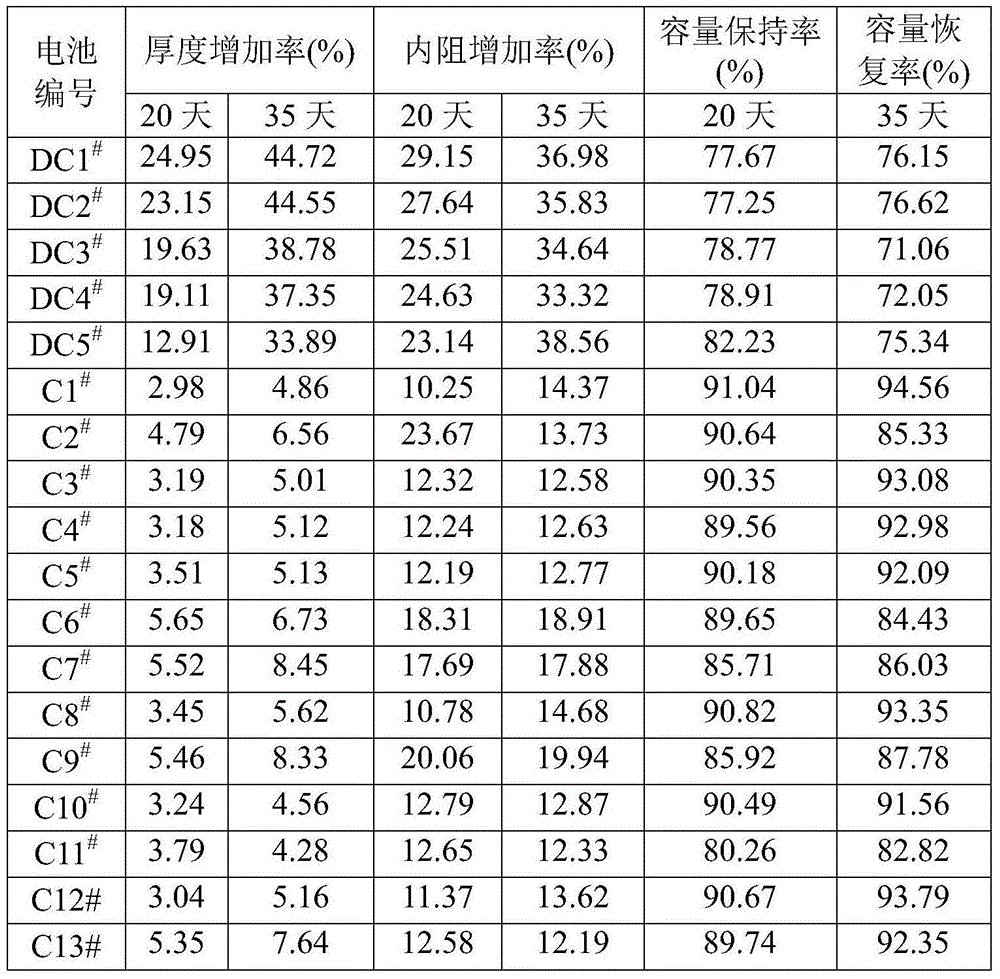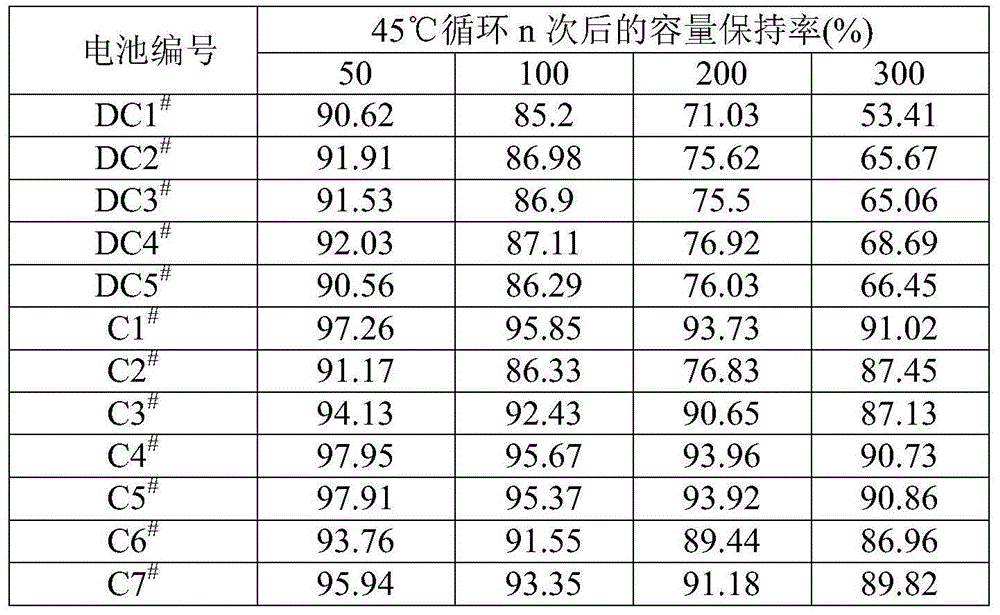Electrolyte of lithium ion battery and lithium ion battery utilizing same
A lithium-ion battery and electrolyte technology, applied in the field of lithium-ion batteries, can solve the problems of poor battery performance at high temperature, and achieve the effect of reducing expansion rate, improving storage, and good high-temperature storage performance
- Summary
- Abstract
- Description
- Claims
- Application Information
AI Technical Summary
Problems solved by technology
Method used
Image
Examples
Embodiment 1
[0042] Embodiment 1 Electrolyte L1 # ~L13 # preparation of
[0043] The preparation steps of the electrolytic solution are: mixing dimethyl carbonate, ethylene carbonate and propylene carbonate in a mass ratio of 1:1:1 as an organic solvent. Add additives to the organic solvent, mix well, then add LiPF 6 , to get LiPF 6 The mixed solution with a concentration of 1 mol / L is the electrolyte.
[0044] The relationship between the number of the obtained electrolyte and the composition of the electrolyte additive is shown in Table 1.
Embodiment 2
[0050] Example 2 Battery C1 # ~C13 # 、DC1 # ~DC5 # production
[0051] Production of the positive electrode sheet:
[0052] The positive electrode active material lithium cobaltate (molecular formula is LiCoO 2), the conductive agent acetylene black, and the binder polyvinylidene fluoride (abbreviated as PVDF) are fully stirred and mixed in N-methylpyrrolidone (abbreviated as NMP) solvent at a weight ratio of 96:2:2 to form a uniform Positive slurry. The slurry was coated on the positive electrode current collector Al foil, dried and cold pressed to obtain the positive electrode sheet.
[0053] Production of negative electrode sheet:
[0054] Negative electrode active material graphite, conductive agent acetylene black, binder styrene-butadiene rubber (abbreviated as SBR), thickener sodium carboxymethyl cellulose (abbreviated as CMC) in an appropriate amount according to the weight ratio of 95:2:2:1 Fully stir and mix in the deionized water solvent to form a uniform an...
Embodiment 3
[0059] Example 3 Battery C1 # ~C13 # 、DC1 # ~DC5 # High temperature storage performance test
[0060] For battery C1 # ~C13 # 、DC1 # ~DC5 # The storage performance test at 60°C was carried out. Among them, the specific operation of the high temperature storage test is: put the battery C1 # ~C13 # 、DC1 # ~DC5 # , charged to 4.5V at a rate of 0.5C, charged at a constant voltage of 4.5V to a current of 0.025C, and then discharged to 3.0V at a rate of 0.5C. The discharge capacity was recorded as the discharge capacity of the battery before storage. After that, charge to 4.5V with a constant current of 0.5C rate, and then charge at a constant voltage of 4.5V to a current of 0.025C, so that it is fully charged at 4.5V, and test the thickness and internal resistance of the battery before storage; then, put the fully charged battery Put them into a 60°C incubator, store them for 20 days and 35 days respectively, and take them out to measure the thickness and internal resis...
PUM
 Login to View More
Login to View More Abstract
Description
Claims
Application Information
 Login to View More
Login to View More - R&D
- Intellectual Property
- Life Sciences
- Materials
- Tech Scout
- Unparalleled Data Quality
- Higher Quality Content
- 60% Fewer Hallucinations
Browse by: Latest US Patents, China's latest patents, Technical Efficacy Thesaurus, Application Domain, Technology Topic, Popular Technical Reports.
© 2025 PatSnap. All rights reserved.Legal|Privacy policy|Modern Slavery Act Transparency Statement|Sitemap|About US| Contact US: help@patsnap.com



